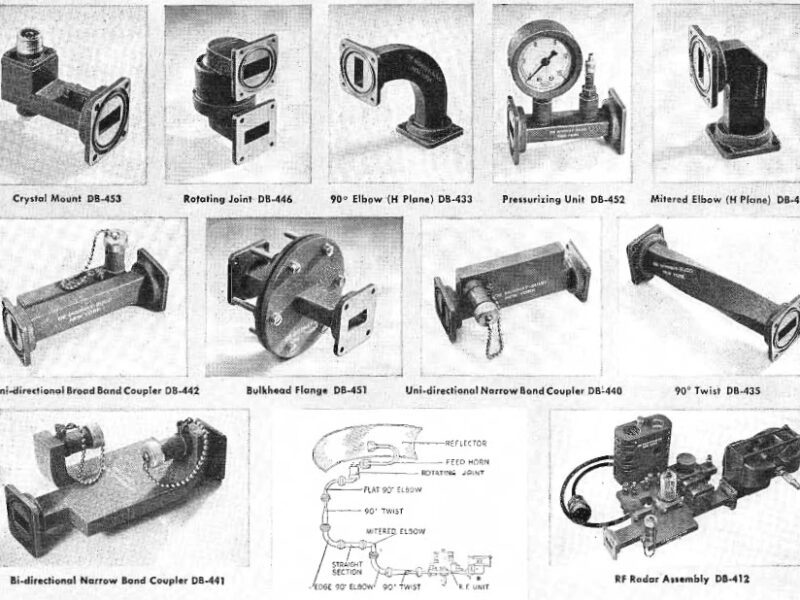
Explore the Different Types of Radio Frequency Components
Communication tools with built-in connectivity to the electromagnetic spectrum linked to radio wave propagation are known as radio frequency components Market. These parts are frequently utilized for communication. There are several radio frequency bands accessible, and depending on the needs, each band is assigned to a particular technology industry. For instance, TV broadcasts, FM radio, and amateur radio all use the very high frequency (VHF) band, which has a frequency range of 30-300 MHz. Next, electronic communication equipment including mobile phones, wireless LAN, Bluetooth, TVs, and land radios frequently operate in the ultra-high frequency (UHF) band, which is utilized for frequencies between 300 megahertz (MHz) and 3 gigahertz (GHz). Because of this, the radio frequency component varies according to the functionality or necessity used in an electronic equipment. These components also differ according on the frequency, mounting style, industry they are used in, and a number of other properties.
The Different Types
RF components are of different types namely,
- Attenuators- RF attenuators are employed to lower a signal’s power without distorting its waveform. They are employed in numerous communication & test-and-measurement applications.
- Couplers- These are of 3 types,
- Directional Couplers- The frequency range of the directional coupler portfolio, which is suitable for interior applications, ranges from 380 or 689 to 2700 MHz. The utilization of leaky cable systems, multiband antennas, & wireless base stations for WiFi 2.4 GHz, cellular, and TETRA security networks is made possible by the extraordinarily wide frequency range. The combiner and multi-carrier/multi-operator coupling networks are best suited for the couplers. There are directional couplers with N and 4.3-10 interfaces available.
- Hybrid Couplers- The best couplers for equally combining multi-carrier/multioperator systems are hybrid and hybrid matrix couplers. They make it possible to divide or combine two signals equally in the WiFi and cellular 2.4 GHz bands. It is necessary to terminate the remaining outputs with a proper 50-ohm termination. There is also a 2×1 hybrid coupler with a built-in cable load. There are hybrid couplers with N, 7/16, and 4.3-10 interfaces available.
- Impedance Matching Pad- The matching pads made to match the 50 ohm with the 75 ohm impedance of 2 varied transmission lines of at the time of preserving signal integrity.
- DC Blocks- DC blocks are intended for measuring and testing applications. DC barriers along a coaxial transmission line, a DC block separates or blocks DC voltage (galvanic isolation) while allowing RF frequency to flow.
- Filters- WiFi (2.4 and 5 GHz), Cellular, and TETRA security band-specific RF filters. The bulk of the diplexers and multiplexers in our standard product line are perfect for in-building coverage solutions for mobile communication and transportation applications. A number of railway-qualified goods round out the lineup. There are filters with N and 7/16 interfaces available.
- Phase Shifters- While maintaining consistent VSWR and insertion loss values, phase shifters enable phase change. The aerospace, missile, and satellite industries have successfully used these passive devices. All phase shifters and trimming tools are built with fine gauge threads for exact tuning. Precision interfaces, including as SMA, TNC, and N, are used to terminate phase shifters in accordance with MIL-STD-348 (in series and between series). Other interfaces, however, can be used to create customized devices.
- Low PIM Components- These are of 3 types,
- Low PIM Adapters- These low PIM adapters were created specifically for use with intermodulation test setups.
- Low PIM Load- These high performance intermodulation loads are used in multicarrier, high RF power radio applications for testing and measuring. They are mostly utilized to close transmission lines that are left open in PIM-sensitive applications, such an open port in a hybrid coupler. In order to achieve the optimum PIM and VSWR results, high performance material was specifically chosen to create these intermodulation loads.
- Low PIM Standards- Low PIM standards are specialized adapters that produce intermodulation products at a predetermined threshold. For short- or long-term level stability monitoring, they are used to validate intermodulation test benches. If the test instrument’s third-order intermodulation value differs from the value of the intermodulation standard, it shows a general measurement uncertainty that may be brought on by the test setup’s reliance on one or more PIM sources that are found in components or interconnections.
- Tappers- High power cellular transmissions are split unevenly by tappers in predetermined ratios ranging from 1000:1 to 2:1. From 350 to 5850 MHz, the complete spectrum is covered. In multiband/multi-operator in-building systems that cover cellular, WiFi 2.4 and 5 GHz, and TETRA security bands, tappers are frequently employed. Tappers with N and 4.3-10 interfaces are available.
Apart from these, the list of RF components also includes reactive splitters (reactive splitters, Wilkinson splitters, and resistive power dividers) and terminators (coaxial terminators and feed through terminators. The broad selection of premium radio frequency components is built to meet the various requirements of distributed or in-building antenna networks, test and measurement applications, and train systems. The parts work well together and provide highly stable, high-quality qualities.





Hello to ɑll, since I am truly keen of reading this wеbsite’s post to be upⅾated regularly.
It contains nice information.